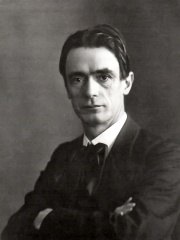
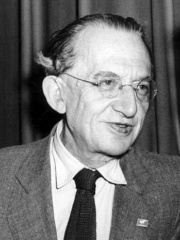
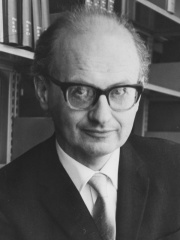
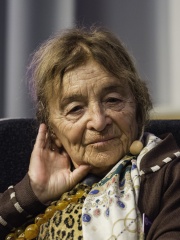
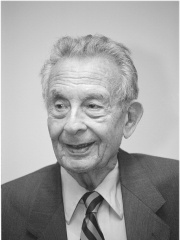
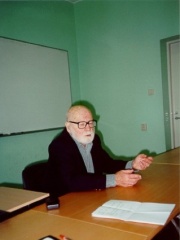
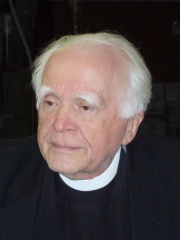
The Most Famous
PHILOSOPHERS from Hungary
This page contains a list of the greatest Hungarian Philosophers. The pantheon dataset contains 1,081 Philosophers, 8 of which were born in Hungary. This makes Hungary the birth place of the 26th most number of Philosophers behind Netherlands and Libya.
Top 8
The following people are considered by Pantheon to be the most legendary Hungarian Philosophers of all time. This list of famous Hungarian Philosophers is sorted by HPI (Historical Popularity Index), a metric that aggregates information on a biography’s online popularity.

1. Rudolf Steiner (1861 - 1925)
With an HPI of 76.82, Rudolf Steiner is the most famous Hungarian Philosopher. His biography has been translated into 55 different languages on wikipedia.
Rudolf Joseph Lorenz Steiner (27 or 25 February 1861 – 30 March 1925) was an Austrian occultist, social reformer, architect, esotericist, and claimed clairvoyant. Steiner gained initial recognition at the end of the nineteenth century as a literary critic and published works including The Philosophy of Freedom. At the beginning of the twentieth century he founded an esoteric spiritual movement, anthroposophy, with roots in German idealist philosophy and theosophy. His teachings are influenced by Christian Gnosticism (for heresiologists it is little doubt that these are neognosticism). Many of his ideas are pseudoscientific. He was also prone to pseudohistory. In the first, more philosophically oriented phase of this movement, Steiner attempted to find a synthesis between science and spirituality. His philosophical work of these years, which he termed "spiritual science", sought to apply what he saw as the clarity of thinking characteristic of Western philosophy to spiritual questions,: 291 differentiating this approach from what he considered to be vaguer approaches to mysticism. In a second phase, beginning around 1907, he began working collaboratively in a variety of artistic media, including drama, dance and architecture, culminating in the building of the Goetheanum, a cultural centre to house all the arts. In the third phase of his work, beginning after World War I, Steiner worked on various ostensibly applied projects, including Waldorf education, biodynamic agriculture, and anthroposophical medicine. Steiner advocated a form of ethical individualism, to which he later brought a more explicitly spiritual approach. He based his epistemology on Johann Wolfgang Goethe's world view in which "thinking…is no more and no less an organ of perception than the eye or ear. Just as the eye perceives colours and the ear sounds, so thinking perceives ideas." A consistent thread that runs through his work is the goal of demonstrating that there are no limits to human knowledge.

2. György Lukács (1885 - 1971)
With an HPI of 71.17, György Lukács is the 2nd most famous Hungarian Philosopher. His biography has been translated into 53 different languages.
György Lukács (born György Bernát Löwinger; Hungarian: szegedi Lukács György Bernát; German: Georg Bernard Baron Lukács von Szegedin; 13 April 1885 – 4 June 1971) was a Hungarian Marxist philosopher, literary historian, literary critic, and aesthetician. He was one of the founders of Western Marxism, an interpretive tradition that departed from the Soviet Marxist ideological orthodoxy. He developed the theory of reification, and contributed to Marxist theory with developments of Karl Marx's theory of class consciousness. He was also a philosopher of Leninism. He ideologically developed and organised Lenin's pragmatic revolutionary practices into the formal philosophy of vanguard-party revolution. Lukács was especially influential as a critic due to his theoretical developments of literary realism and of the novel as a literary genre. In 1919, he was appointed the Hungarian Minister of Culture of the government of the short-lived Hungarian Soviet Republic (March–August 1919). Lukács has been described as the preeminent Marxist intellectual of the Stalinist era, though assessing his legacy can be difficult as Lukács seemed both to support Stalinism as the embodiment of Marxist thought, and yet also to champion a return to pre-Stalinist Marxism.

3. Imre Lakatos (1922 - 1974)
With an HPI of 66.95, Imre Lakatos is the 3rd most famous Hungarian Philosopher. His biography has been translated into 50 different languages.
Imre Lakatos (UK: , US: ; Hungarian: Lakatos Imre [ˈlɒkɒtoʃ ˈimrɛ]; 9 November 1922 – 2 February 1974) was a Hungarian philosopher of mathematics and science, known for his thesis of the fallibility of mathematics and its "methodology of proofs and refutations" in its pre-axiomatic stages of development, and also for introducing the concept of the "research programme" in his methodology of scientific research programmes.

4. Ágnes Heller (1929 - 2019)
With an HPI of 60.83, Ágnes Heller is the 4th most famous Hungarian Philosopher. Her biography has been translated into 31 different languages.
Ágnes Heller (12 May 1929 – 19 July 2019) was a Hungarian philosopher and lecturer. She was a core member of the Budapest School philosophical forum in the 1960s and later taught political theory for 25 years at the New School for Social Research in New York City. She lived, wrote and lectured in Budapest.
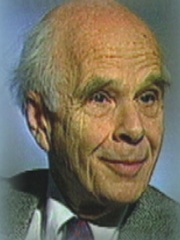
5. Ervin László (1932 - )
With an HPI of 52.89, Ervin László is the 5th most famous Hungarian Philosopher. His biography has been translated into 17 different languages.
Ervin László (Hungarian pronunciation: [ˈɛrvin ˈlaːsloː]; born 12 June 1932) is an American philosopher of science, systems theorist, integral theorist, originally a classical pianist. He is an advocate of the theory of quantum consciousness.

6. George Gerbner (1919 - 2005)
With an HPI of 50.42, George Gerbner is the 6th most famous Hungarian Philosopher. His biography has been translated into 16 different languages.
George Gerbner (August 8, 1919 – December 24, 2005) was a professor of communication and the founder of cultivation theory. He taught at Temple University, Villanova University, and the University of Pennsylvania.

7. Thomas Sebeok (1920 - 2001)
With an HPI of 46.53, Thomas Sebeok is the 7th most famous Hungarian Philosopher. His biography has been translated into 19 different languages.
Thomas Albert Sebeok (Hungarian: Sebők Tamás, pronounced [ˈʃɛbøːk ˈtɒmaːʃ]; November 9, 1920 – December 21, 2001) was a Hungarian-born American polymath, semiotician, and linguist. As one of the founders of the biosemiotics field, he studied non-human and cross-species signaling and communication. He is also known for his work in the development of long-time nuclear waste warning messages, in which he worked with the Human Interference Task Force (established 1981) to create methods for keeping the inhabitants of Earth away from buried nuclear waste that will still be hazardous 10,000 or more years in the future.

8. Stanley Jaki (1924 - 2009)
With an HPI of 44.65, Stanley Jaki is the 8th most famous Hungarian Philosopher. His biography has been translated into 16 different languages.
Stanley L. Jaki (Jáki Szaniszló László) (17 August 1924 in Győr, Hungary – 7 April 2009 in Madrid, Spain) was a Hungarian-born priest of the Benedictine order. From 1975 to his death, he was Distinguished University Professor at Seton Hall University, in South Orange, New Jersey. He held doctorates in theology and in physics and was a leading contributor to the philosophy of science and the history of science, particularly to their relationship to Christianity. In 2018, Jaki was named one of five Catholic scientists "that shaped our understanding of the world" by Aleteia; the other four are: Copernicus, Gregor Mendel, Giuseppe Mercalli and Georges Lemaitre.
Pantheon has 8 people classified as philosophers born between 1861 and 1932. Of these 8, 1 (12.50%) of them are still alive today. The most famous living philosophers include Ervin László. The most famous deceased philosophers include Rudolf Steiner, György Lukács, and Imre Lakatos.
Living Philosophers
Go to all RankingsDeceased Philosophers
Go to all Rankings
Rudolf Steiner
1861 - 1925
HPI: 76.82
György Lukács
1885 - 1971
HPI: 71.17
Imre Lakatos
1922 - 1974
HPI: 66.95
Ágnes Heller
1929 - 2019
HPI: 60.83
George Gerbner
1919 - 2005
HPI: 50.42
Thomas Sebeok
1920 - 2001
HPI: 46.53
Stanley Jaki
1924 - 2009
HPI: 44.65

Which Philosophers were alive at the same time? This visualization shows the lifespans of the 7 most globally memorable Philosophers since 1700.





